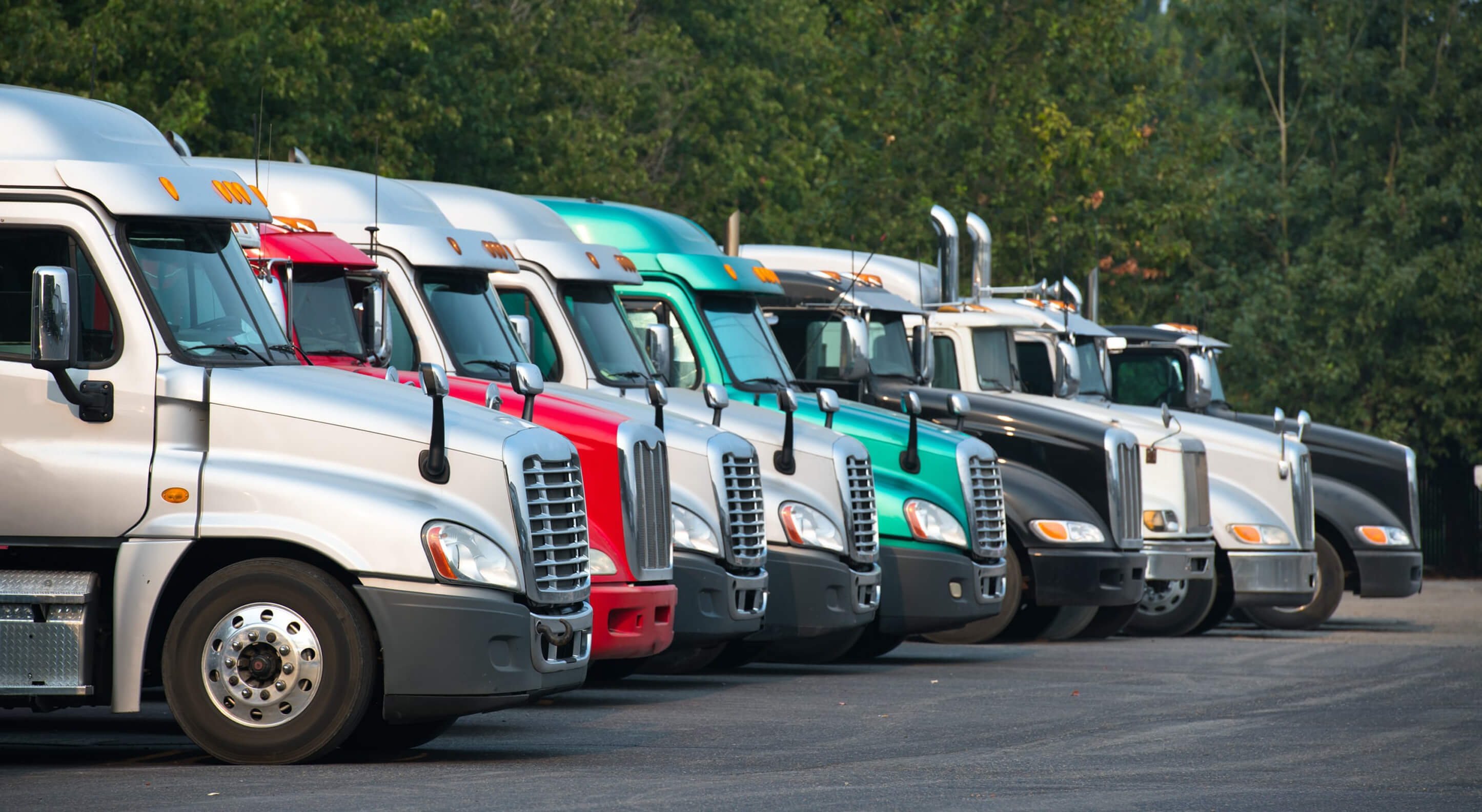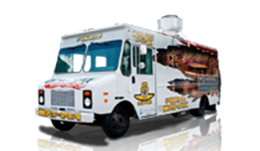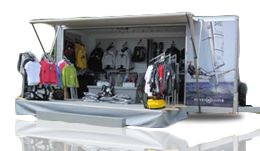Semi-Trailer Dimensions and Laws You Should Know to Avoid Fines and Penalties

For a typical motorist, semi-trucks are large and powerful vehicles. They are dreaded on the road. Though they entertain kids, adults are wary about getting in an accident with them. But these commercial semi-trailers are the heart of the American economy. They are the channels getting your favorite cereal on grocery shelves. They bring gas at your local station. They even make it possible for your online others to reach your homes. But, did you know that these semi-trailers strictly follow restrictions and rules? Let’s take a look at semi-trailer dimensions and laws.
What’s Inside
Types of Semi-Trailers
A semi-trailer truck is a combination of a truck combined with one or more semi-trailers. The trailers have no engines, so they’re attached to the truck using a fifth wheel. This horse-shoe shape coupling was attached to the truck’s kingpin. The kingpin pivots the steering. There are many types of trailers used for different loads and purposes. Here’s a list of the most common types of semi-trailers.
Dry Vans
Dry Vans are semi-trailers with enclosed boxes. The boxes protect the load from weather elements. These types of semi-trailers can be used to transport band equipment and tools. They can transport any types of loads.
Flatbed
Flatbed semi-trailers don’t have a box. Instead, all sides are open for a crane or forklift to pick the load up from the sides or top. These types of semi-trailer are ideal for transporting lumber and steel coils.
Low-boy
Low-boy semi-trailers are with two deck drops. One drop is located behind the gooseneck and the other drop is located before the wheels. They are designed to transport oversized equipment and heavy construction items.
Reefers
Reefers are boxed semi-trailers with a compressor, condenser, and evaporator. These cooling systems are used to transport frozen goods and pharmaceutical needs.
Step-decks
Step-decks are open semi-trailers with two decks and a ramp for unloading. Their height is lower than that of a flatbed. These types of semi-trailer are ideal for transporting building materials and large machines. Commonly, they are used to transport goods that cannot be transported by flatbeds. This is due to their height restrictions.
Most Common Semi-Trailer Dimensions and Weight Limits
The Federal Motor Carrier Safety Administration (FMCSA) defined commercial trucks and semi-trailers as vehicles used to transport freight weighing more than 10,000 pounds.
- The common dimensions of dry vans are 9 feet high, 48 to 53 feet long, and 8.5 feet wide. Their typical weight limit ranges from 42,000 to 45,000 pounds.
- Flatbed semi-trailers can load up to 48,000 pounds. There are commonly 5 feet high above the ground and around 8.5 feet wide. Their length varies into 24, 40, 45, 48, and 53 feet. The most common flatbed is 48 feet long.
- Lowboy semi-trailers are commonly 29 feet long and 8.5 feet wide. They have a deck height of 1.5 to 2 feet and a weight limit of 40,000 pounds. The height limit can be extended to 14 feet and the weight limit can increase up to 80,000 pounds. But there’s a need to get a special permit for such oversized loads.
- Reefers are commonly 8 feet high, 48 to 53 feet long, and 8 feet wide. Their typical weight limit is like those of dry vans. It ranges from 42,000 to 45,000 pounds.
- The common dimensions for step -decks are 37 feet long, 10 feet high, and 8.5 feet high. They can carry up to 90,000 pounds.
Semi-Trailer Federal Government Dimensions and Laws
The United States Federal Government regulates the size of commercial vehicles through the Federal Highway Administration (FHWA). The length allowed for semi-trailers is between 48 to 65 feet. The width allowed is up to 8.5 feet. There’s no federal height requirement for commercial vehicles. But different state laws regulate them. The greatest weight limit allowed is 80,000 pounds.
Semi-Trailer Dimensions and Laws Per State
Every U.S. state imposes laws for semi-trailer dimensions. Below is a table of allowable length, height, and width per state.
| Allowable Semi-Trailer Dimensions Per U.S. State | |||
| U.S. State | Length | Width | Height |
| Alabama | 53’ 6” | 8’ 6” | 13’ 6” |
| Alaska | 48’ | 8’ 6” | 15’ |
| Arizona | 57’ 6” | 8’ 6” | 14’ |
| Arkansas | 53’ 6” | 8’ 6” | 13’ 6” |
| California | 48’ | 8’ 6” | 14’ |
| Colorado | 57’ 4” | 8’ 6” | 13’ |
| Connecticut | 48’ | 8’ 6” | 13’ 6” |
| Delaware | 53’ | 8’ 6” | 13’ 6” |
| District of Columbia | 48’ | 8’ 6” | 13’ 6” |
| Florida | 48’ | 8’ 6” | 13’ 6” |
| Georgia | 48’ | 8’ 6” | 13’ 6” |
| Hawaii | 48’ | 9’ | 14’ |
| Idaho | 48’ | 8’ 6” | 14’ |
| Illinois | 53’ | 8’ 6” | 13’ 6” |
| Indiana | 48’ 6” | 8’ 6” | 13’ 6” |
| Iowa | 53’ | 8’ 6” | 13’ 6” |
| Kansas | 57’ 6” | 8’ 6” | 14’ |
| Kentucky | 53’ | 8’ 6” | 14’ |
| Louisiana | 59’ 6” | 8’ 6” | 13’ 6” |
| Maine | 48’ | 8’ 6” | 14’ |
| Maryland | 48’ | 8’ 6” | 13’ 6” |
| Massachusetts | 48’ | 8’ 6” | 13’ 6” |
| Michigan | 48’ | 8’ 6” | 13’ 6” |
| Minnesota | 48’ | 8’ 6” | 13’ 6” |
| Mississippi | 53’ | 8’ 6” | 13’ 6” |
| Missouri | 53’ | 8’ 6” | 13’ 6” |
| Montana | 53’ | 8’ 6” | 14’ |
| Nebraska | 53’ | 8’ 6” | 13’ 6” |
| Nevada | 53’ | 8’ 6” | 14’ |
| New Hampshire | 48’ | 8’ 6” | 13’ 6” |
| New Jersey | 48’ | 8’ 6” | 13’ 6” |
| New Mexico | 57’ 6” | 8’ 6” | 14’ |
| New York | 48’ | 8’ 6” | 13’ 6” |
| North Carolina | 48’ | 8’ 6” | 13’ 6” |
| North Dakota | 53’ | 8’ 6” | 14’ |
| Ohio | 53’ | 8’ 6” | 13’ 6” |
| Oklahoma | 59’ 6” | 8’ 6” | 14’ |
| Oregon | 53’ | 8’ 6” | 13’ 6” |
| Pennsylvania | 53’ | 8’ 6” | 13’ 6” |
| Rhode Island | 48’ | 8’ 6” | 13’ 6” |
| South Carolina | 48’ | 8’ 6” | 13’ 6” |
| South Dakota | 53’ | 8’ 6” | 14’ |
| Tennessee | 50’ | 8’ 6” | 13’ 6” |
| Texas | 59’ | 8’ 6” | 14’ |
| Utah | 48’ | 8’ 6” | 14’ |
| Vermont | 48’ | 8’ 6” | 13’ 6” |
| Virginia | 48’ | 8’ 6” | 13’ 6” |
| Washington | 48’ | 8’ 6” | 14’ |
| West Virginia | 48’ | 8’ 6” | 13’ 6” |
| Wisconsin | 48’ | 8’ 6” | 13’ 6” |
| Wyoming | 57’ 4” | 8’ 6” | 14’ |
Final Thoughts
As a truck driver or operator, it is highly necessary to familiarize yourself with the length laws imposed by the state. Running into legal surprises is definitely a huge inconvenience. As you cross between places, a semi trailer length that is perfectly legal in one state could be forbidden in another. Know how to follow restrictions and rules for a hassle-free journey on the road.
Thinking about buying a semi trailer for your business? Well, this is the sign you’ve been waiting for. Check out our used semi trailers listing here. We have a wide selection of quality units at the best price and yet are still in amazing condition. You will definitely love them!







